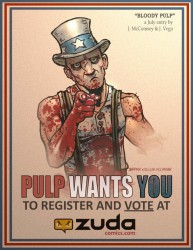
Adam Warren Week: Gen13 & Livewires, yo!
July 22nd, 2009 Posted by david brothersI think Gen13 may have been my introduction to Adam Warren. I kinda sorta remember picking up it up when I was super high off Wildcats 3.0. Later, I picked up Livewires, a Marvel miniseries that Warren wrote and Rick Mays drew in 2005. I can’t help but associate one series with the other, even beyond the Adam Warren connection, because they both take the idea of a “comic book universe” head-on and treat it with a certain measure of, if not respect, realism.
Most comics tend toward real life in terms of technology and style. Reed Richards is a crazy supergenius, Superman’s an alien, and lasers exist, but real life is more or less the same as it is in our world. Gen13 and Livewires, though, take the opposite tack. Superheroes run rampant in Gen13, by way of a not-so-underground youth sub-culture based around being posthuman. There are gimmick groups, really professional teams, people who just abuse their mental powers to get themselves off, and others who are ironic superteams. Livewires exists in the black ops area of the Marvel Universe, performing cleanup jobs on rogue technology and getting into high tech gun battles.



The two books also places young people, or at least reasonable facsimiles thereof, right in the spotlight. The members of Gen13 are hormonal, angsty, and focused on how other people perceive them. Roxy struggles with her body, Caitlin tries to be the mother of the gang, and the others all have their own problems. Livewires stars androids are like next-gen ’80s John Hughes movie stereotypes– the goth, the cool guy, the popular one, the jock, and the newbie. Their stereotypes help create their personality and provide a few fascinating inversions of the stereotypes over the course of the story.
Warren, particularly in Gen13, throws the characters up against the wall over and over again, and we end up seeing what makes them work. There’s an issue of Gen13 that centers around Sarah Rainmaker, her powers, and her relationship with her uncle. It’s one of those things where a character has a heart to heart or a vulnerable moment while doing something athletic or using their powers, but it provides great insight into Rainmaker’s mind. It shows how she was built as a person, and then it shows exactly what she’s capable of. Not to mention that it’s mildly funny at the same time. Not to mention the end of his run on Gen13, which is up there with Hitman and New X-Men for my favorite endings of all time.
In a similar vein, Livewires is about identity. The main character, Stem Cell, doesn’t believe she’s a robot (pardon the r-word, my mecha, i’ll do better) until she’s forced to face reality. The disbelief is designed to make it easier to activate her and get her used to real life, but it also brought a few questions to mind as I read over the book.



Why should the mecha be treated as less than human? Their personalities may be programmed, but their AI is as good as any human’s. They perform a lot of the same jobs, often with greater accuracy. As in Pluto, what does it mean to be human?
It’s the fact that the books focus on younger people that makes them work for me. Teen Titans, X-Men, and pretty much everything but Runaways have devolved into generic superhero tales, all full of sound and fury and continuity. They’re no longer about teenagers doing teenaged things, like Warren’s Gen13 run was. When’s the last time Robin and the gang went out to a party of teen heroes? Gen13 did it, and they found a bunch of friends in the form of the Mongolian Barbecue Horde (amongst other names). They’d hang around the house, play DDR, talk about girls or boys, and do teenaged things. It wasn’t just wham, bam, another friend is dead, time for a funeral.
This is a big part of what I like about Adam Warren. He manages to latch onto something that you either hadn’t thought of, or wished would happen, and spins it into something fresh. Writing teenagers isn’t as simple as mentioning Xbox or iPods or PlayStation. That kind of Mad Libs writing always comes off lame. Actually knowing what you’re talking about, taking into account how teenagers act, and being willing to experiment makes for a good time.




Case in point– Adam Warren’s Galacta, daughter of Galactus, has been greenlit for a series of stories on Marvel’s webcomic service. He wrote a tale about Gali and her issues with eating, and bam, people dug it. It was something fresh, and it worked. I’m pretty pleased, and look forward to seeing it when it drops. I know that with Adam Warren, I’m getting something that’s going to be interesting.








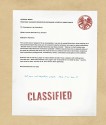
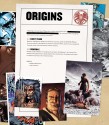

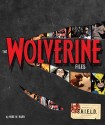
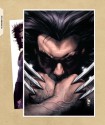
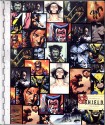
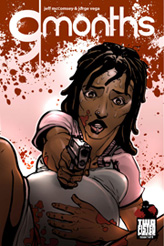 I dig Jorge Vega and Jeff McComsey’s 9 Months, but I think my favorite part might be the cover. It’s a simple picture, just Thomasina, knee-deep in pregnancy and holding a gun while looking surprised. Something about it manages to sum the series up pretty well. This isn’t one of those books where it’s about backflips and double dragon flip kicks. It’s about desperation, and hard choices, and responsibility.
I dig Jorge Vega and Jeff McComsey’s 9 Months, but I think my favorite part might be the cover. It’s a simple picture, just Thomasina, knee-deep in pregnancy and holding a gun while looking surprised. Something about it manages to sum the series up pretty well. This isn’t one of those books where it’s about backflips and double dragon flip kicks. It’s about desperation, and hard choices, and responsibility.